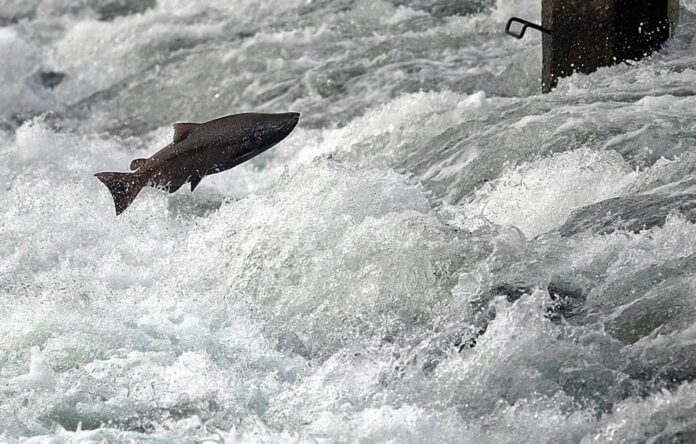The Russian River’s endangered salmon population faces near extinction this century if current environmental hazards go unchecked, according to a report last week to the North Coast Regional Water Quality Control Board.
Entitled “Fish in Hot Water,” the report by University of California at Davis fisheries biologists “finds that if present population trends continue, 45 percent of California’s native salmonids are likely to be extinct in the next 50 years,” said NCRWQCB Executive Officer Matt St. John in a report summary. The die-off could be 75 percent within 100 years, owing mainly to climate change and global warming.
“The effects of climate change on California salmonids are considered the major, overarching threat” to salmonid survival, said St. John.
The salmon report, presented by Peter Moyle, Rob Lusardi and Patrick Samuel of the U.C. Davis Center for Watershed Studies, cites the recent four-year California drought and expanding research into the effects of climate change among key reasons why “the future for California’s native salmon, steelhead and trout populations looks dire,” said St. John.
Warmer water, lower stream flows and sea level rise are among the major concerns threatening the survival of the native fish, said St. John’s report. The report’s basic findings show that most endangered fish populations on the North Coast have declined since 2007, said Moyle, the report’s lead author.
“So over 10 years we’ve seen a significant decline of these species. Obviously drought is a contributing factor to this,” said Moyle. “Our predictions are that if these present trends continue about three-quarters of these fish will be extirpated by 2100. That’s why this is so alarming.”
“We think that roughly half of them will be extirpated in 50 years. That’s if present trends continue…If we don’t do something about it, this is what will happen,” said Moyle.
He added: “There’s a lot we can do. But the public needs to understand that if you want to have salmonids around in California in the future a lot of sacrifices have to be made and we have to invest in these watersheds.”
The informational report is intended “to facilitate a discussion of potential actions the regional board can pursue to protect salmonid populations, said St. John. Immediate action is needed “to improve habitats and make conditions more suitable to long-term survival.”
Some of needed actions, such as improving tributary habitat, regulating stream depletion caused by vineyard and cannabis cultivation, attempting to maintain a closed estuary in the summer and removing fish passage barriers, are under way in the Russian River watershed.
62.5
F
Healdsburg
April 19, 2025








